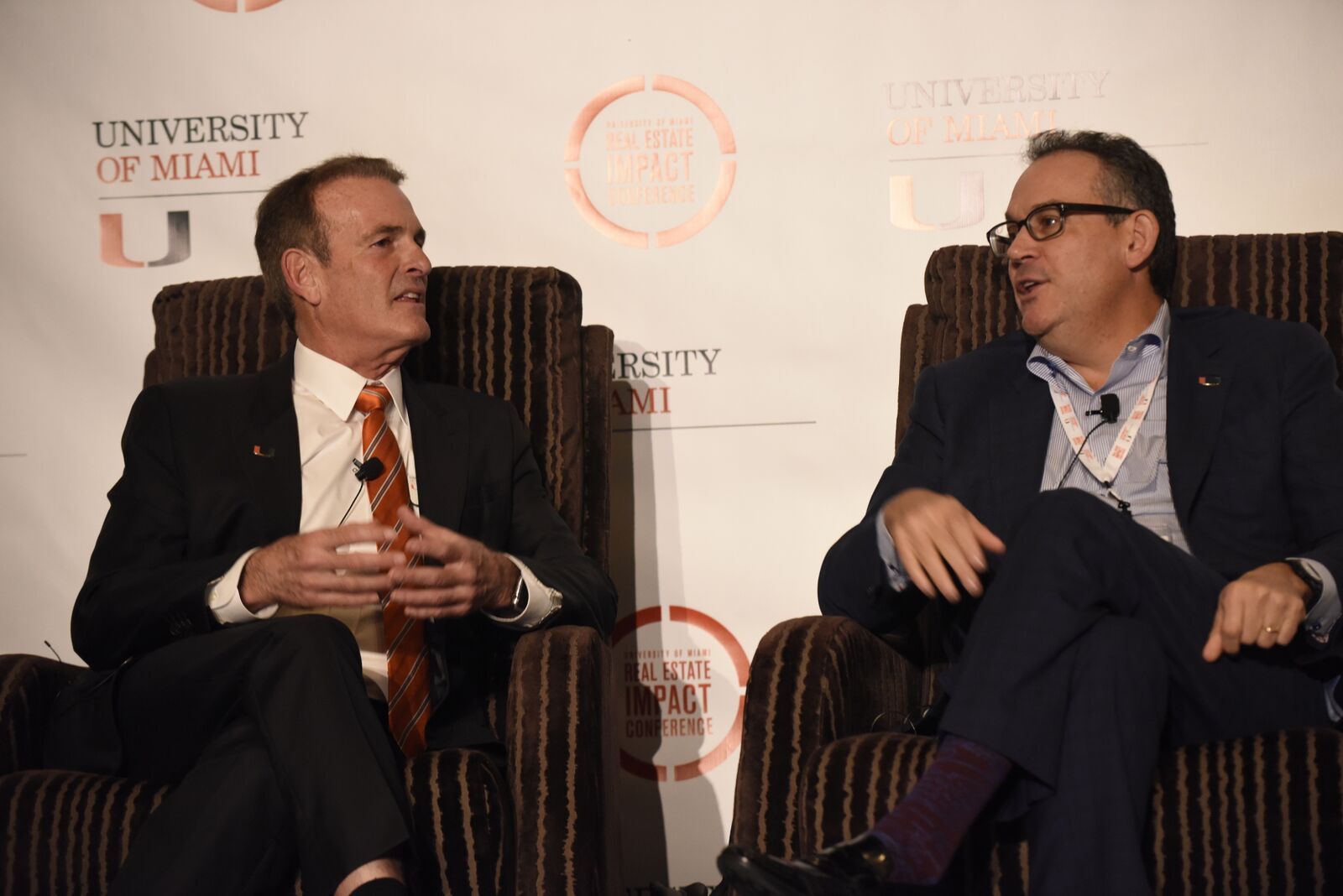Trending
David Simon of Simon Property Group talks the future of malls, life as a scion

David Simon sees change afoot at malls, where department stores have too much space, and marketing efforts need to be aimed directly at consumers amid heated competition from online shopping.
“We need to diversify the mix and reduce the reliance on apparel…. If you do all of it and you are well located, the mall will continue to evolve and be an important part of the community,” said Simon, chairman and CEO of Indianapolis-based Simon Property Group. He was the keynote speaker in a conversation on “Leadership and Disruption” with Lennar Corp. CEO Stuart Miller at the University of Miami’s Real Estate Impact Conference on Friday afternoon at the Four Season Hotel Miami.
With an equity market cap of $64 billion, Simon Property Group has nearly $100 billion in assets, including 100 malls and 70 outlets in the United States. In South Florida, the company owns Dadeland Mall, Sawgrass Mills, the Falls, Miami International Mall, Boca Town Centre, and is part owner of Aventura Mall and co-developer of the retail portion at Brickell City Centre.
“We love South Florida,” Simon said, asking Miller jokingly if he could find him a house and get him into the right golf club, because with possible tax revisions looming, he may move here.
Simon grew up the son of Melvin Simon, “an entrepreneur bootstrap father” who was “larger than life.” But he didn’t realize the family had money until he was 15 or 16.
“It does instill in you a certain desire to outdo the old man,” he said. “His drive was what he passed on the most to me.”
Simon worked on Wall Street before returning home to work at Simon Property Group. He said it was important to see what he could do on his own. “When you come back to our family business, you want to add something to the table and the background gave me that.”
It was 1990, during a real estate recession. He spent the first few years stabilizing the company and took it public in 1993. In 2000, he became involved in outlets. “It’s been a very good business,” he said. “It’s tougher recently because outlets are tourism oriented and with the strong dollar there’s been a little softness.”
As the industry changes, he said malls now have too much space dedicated to department stores, and retailers need to invest in their stores. “They are investing too much in technology, with free shipping and free returns, and stores are not looking good…. You have to have a good product because it’s so easy to shop online.”
In the past, malls have depended on retailers to connect to shoppers. Now, “it’s up to us to drive traffic from consumers and connect with them..,” Simon said. “We have to take on the burden and create better experiences to create more traffic.”




